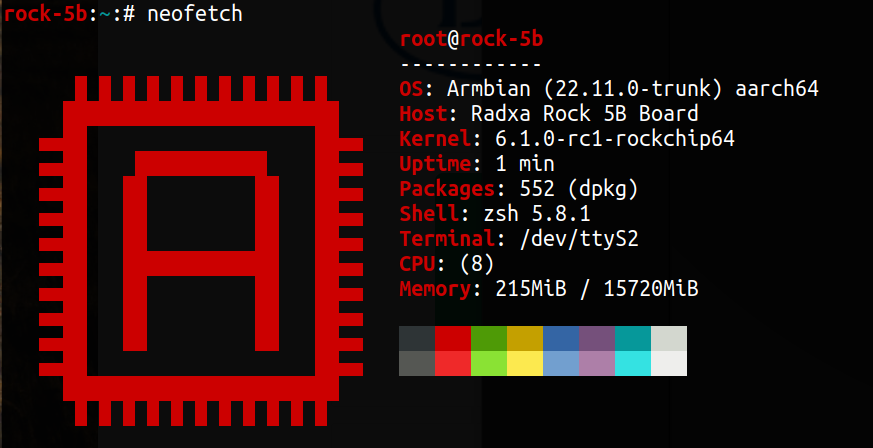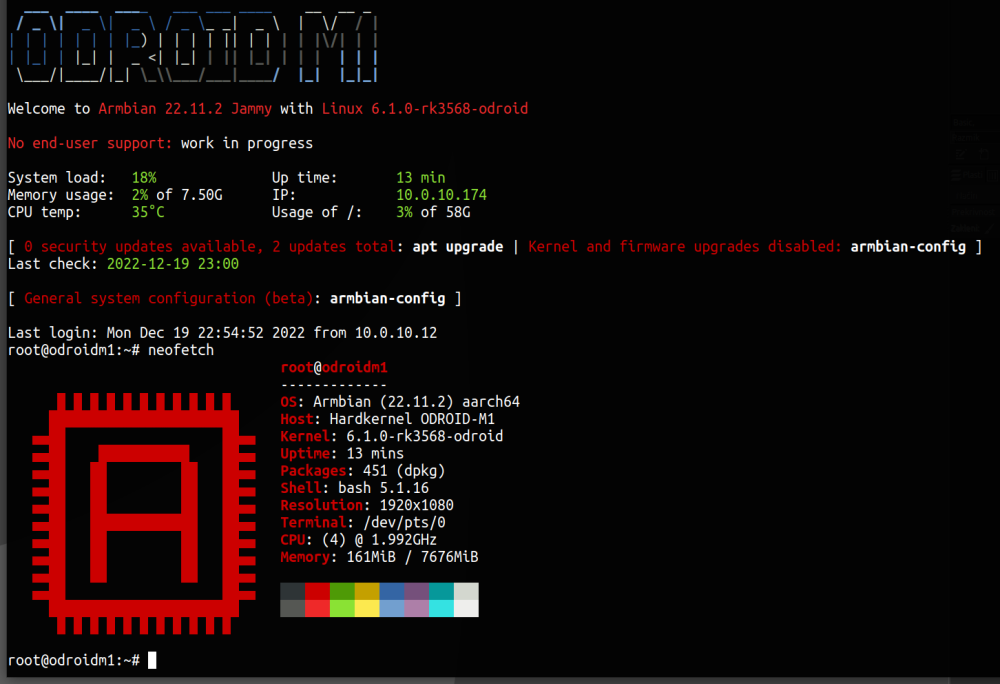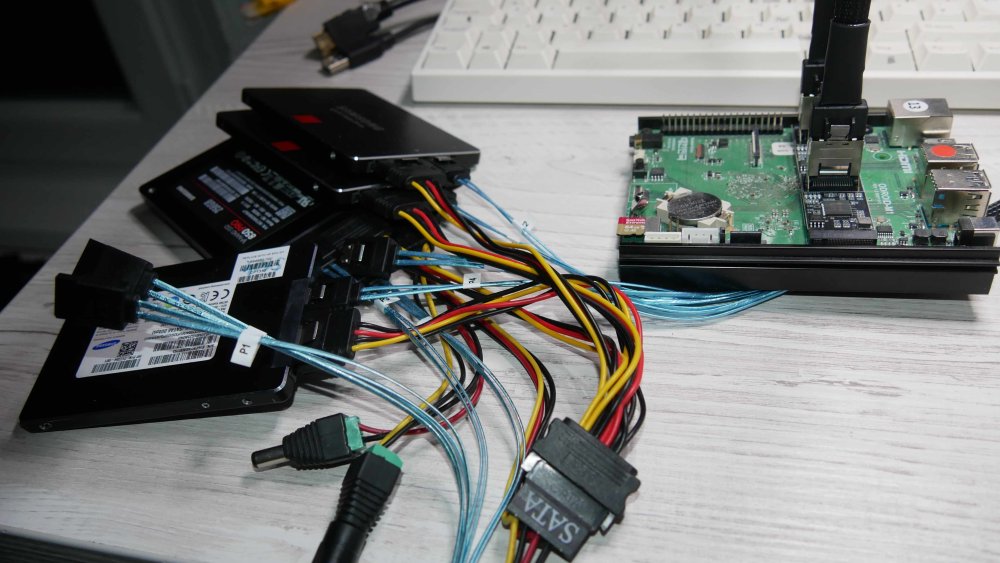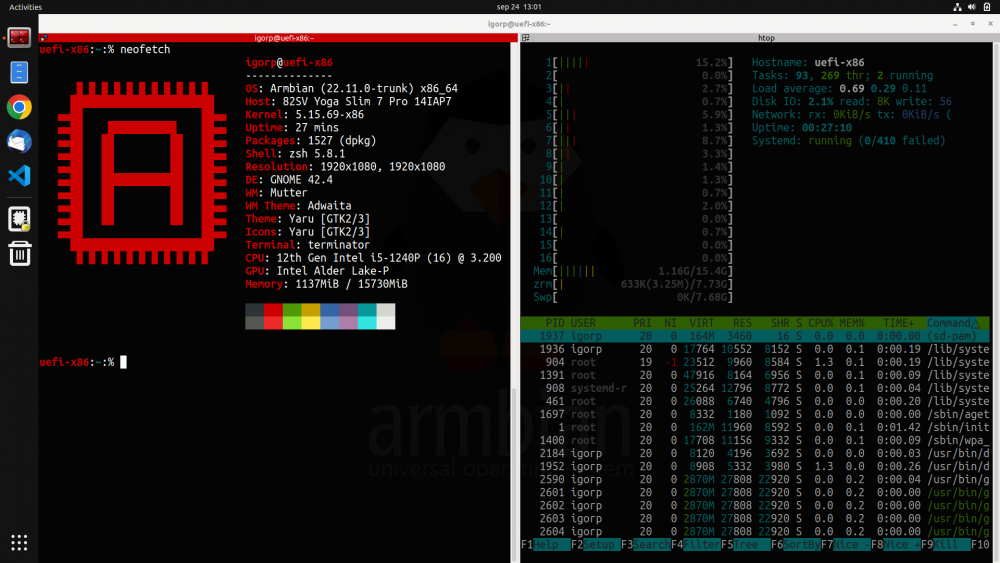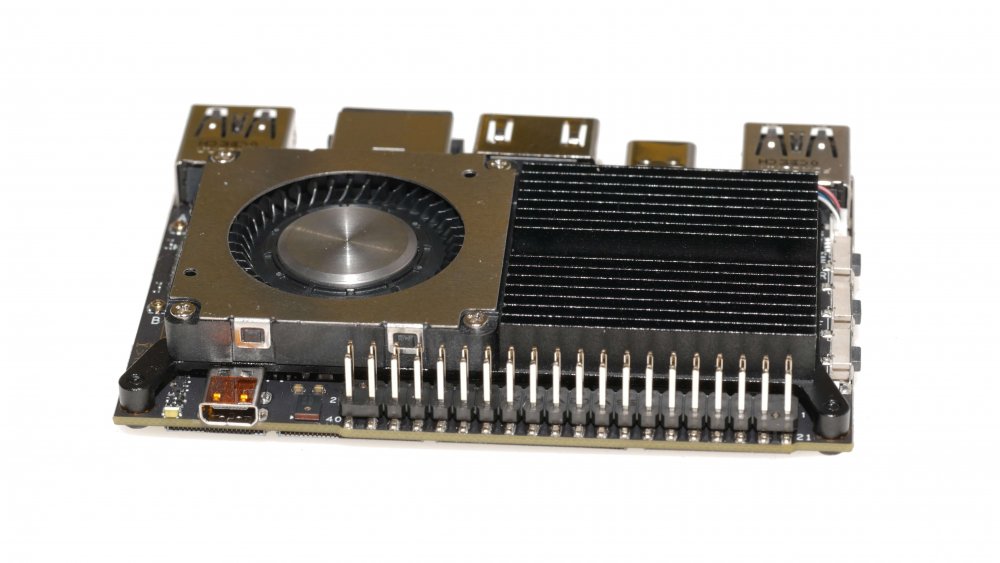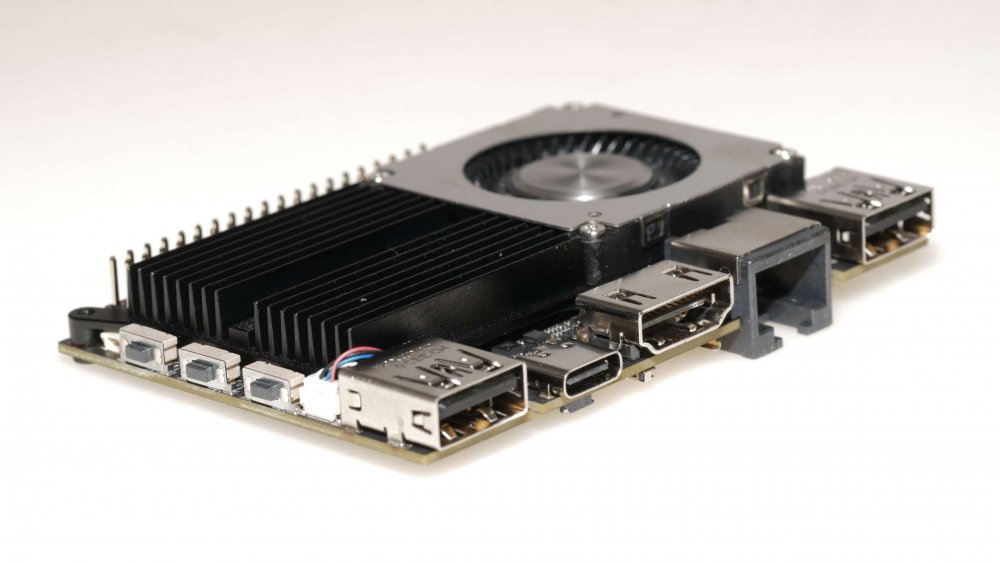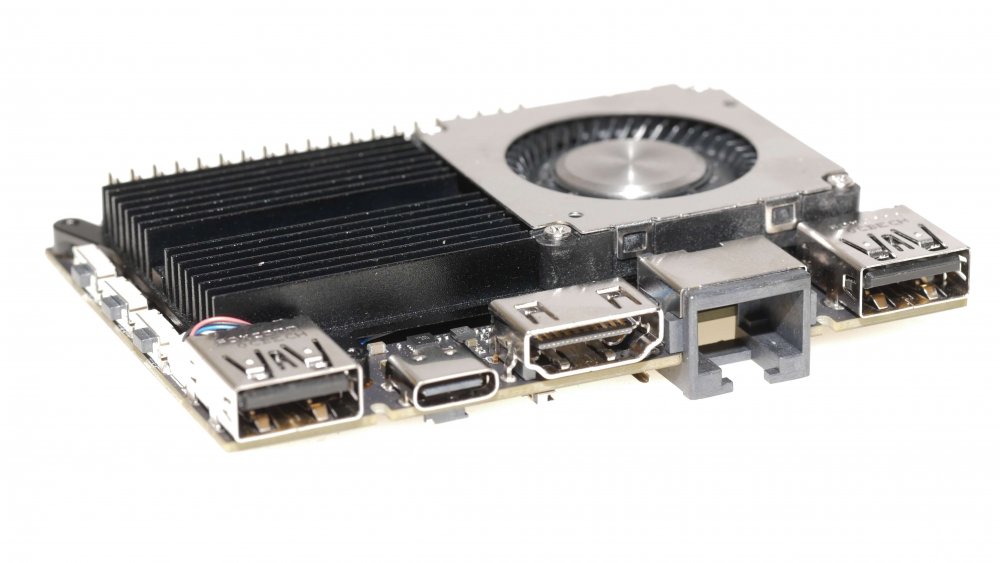-
Posts
14590 -
Joined
-
Last visited
Content Type
Forums
Store
Crowdfunding
Applications
Events
Raffles
Community Map
Everything posted by Igor
-
Yeah, true. Not worth the troubles. For build runners we don't need anything special. Just internet connection, not even any private networking. At least not until all other runners are just everywhere.
-
This week meeting topics: 1. Pre-release CI status check General goal of weekly meetings: To discuss the three (3) issues of the week Discussions will be documented to respective Jira tickets so they can be tracked Three (3) new issues will be selected from Jira for the next meeting The purpose of a weekly developers meeting is to coordinate development of the build engine, continuous integration, operating system features and low level support. Meetings are hosted located on Zoom (Video) and IRC and Discord (Text). While we would prefer you attend on Zoom when possibly, we will also monitor text chat during the call for those unable to join Zoom. Please RSVP either way. Do you want to participate or help in some way? Meetings are focused in developers top level topics and its expected that understand embedded software development, software testings or operating system management. In term of programming languages, knowledge of at least BASH & Python is expected. Since meetings are held in public, any registered community member can join and listen. If you want to suggest issues for the next week, you have to be recognized Armbian contributor. If you want to become one, resolve at least one intermediate level issue and tell us something about you. This is needed to efficiently communicate and to give you access to our organisation infrastructure Jira, Github, hardware lab and servers. @Contributor/Maintainer
-

How to enter specific user name on Armbian Gnome Greeter/Login screen?
Igor replied to Jibun no Kage's topic in Rockchip
https://docs.armbian.com/User-Guide_Getting-Started/#how-to-check-download-authenticity I am sorry, but this "Armbian" have nothing to do with us. Contact people / vendor that made this assembly. Moving to unsupported. -
This is worrying. Tried all possible methods with Khadas Rescue tools? https://www.khadas.com/post/krescue-take-control-of-your-vim https://hackmd.io/@Collega/HkKVfudc9
-

u-boot 2022.10-armbian hangs when a USB hard disk is connected
Igor replied to Marco d_Itri's topic in Banana Pi M5
If you find a better working u-boot version, sent a PR with changes to this line and you will make all users of this hw happier: https://github.com/armbian/build/blob/main/config/boards/bananapim5.conf#L10 -
Video 1. Reviewing where we are with CI support 2. Challenges of upcoming release
-
This should fix it: https://github.com/armbian/build/pull/5132 Feel free to sent a PR in case you find something like that.
-
It looks like support is covered with this driver and there are not obvious reasons why it doesn't work. Try contacting people in the commit message. https://git.kernel.org/pub/scm/linux/kernel/git/stable/linux.git/commit/drivers/net/wireless/broadcom/brcm80211/brcmfmac?h=v6.3.1&id=0ec9eb90feec4933637fbde9d5bfbc3b62aea218 One is adding support and something else is keeping it in operational state once kernel changes. Sadly there is little we can assist here - wireless drivers are mess and we avoid them as one can eat us moths. And such luxury we don't have. P.S. Regarding your request. We have no idea why you don't have access to private forum - infrastructure bug Everything looks alright, but it doesn't work ... As we don't maintain this forum software on our own - its too complicated / not possible - we need to raise a ticket at 3rd party, which will take time and which is why I replied here.
-
You need to provide exact steps - what you did. Or better what you have ignored ... if you start with a destkop image, just follow 1st run wizzard and desktop will be loaded. If you skip one critical step (generating username) desktop won't run.
-
Possible quick fix is: sudo apt install armbian-firmware-full + reboot If that doesn't help, its more complicated.
-
This week meeting topics: 1. Upcoming release 2. Security in GitHub actions 3. CI support General goal of weekly meetings: To discuss the three (3) issues of the week Discussions will be documented to respective Jira tickets so they can be tracked Three (3) new issues will be selected from Jira for the next meeting The purpose of a weekly developers meeting is to coordinate development of the build engine, continuous integration, operating system features and low level support. Meetings are hosted located on Zoom (Video) and IRC and Discord (Text). While we would prefer you attend on Zoom when possibly, we will also monitor text chat during the call for those unable to join Zoom. Please RSVP either way. Do you want to participate or help in some way? Meetings are focused in developers top level topics and its expected that understand embedded software development, software testings or operating system management. In term of programming languages, knowledge of at least BASH & Python is expected. Since meetings are held in public, any registered community member can join and listen. If you want to suggest issues for the next week, you have to be recognized Armbian contributor. If you want to become one, resolve at least one intermediate level issue and tell us something about you. This is needed to efficiently communicate and to give you access to our organisation infrastructure Jira, Github, hardware lab and servers. @Contributor/Maintainer
-
If you will be digging in: - u-boot package contains information how to flash boot loader to eMMC/SD/SPI - this is install script that is called from armbian-config, also works as standalone armbian-install
-
https://docs.armbian.com/User-Guide_FAQ/#why-does-hardware-feature-xy-work-in-old-kernel-but-not-in-more-recent-one In some cases (Rock 5, Bananapi 5, ...) we are providing images with pretty well working but outdated kernel which is responsible for interacting with hardware. Difference between legacy and modern mainline is extreme. 1) devices that are plugged to the board were never officially supported. Porting drivers to the mainline for all Linux community (by a few people) is done in best effort manner. 2) it always works this way https://docs.armbian.com/User-Guide_Getting-Started/#how-to-install-to-emmc-nand-sata-nvme-usb unless it doesn't / its broken. If its broken it can be broken for all boards. SPI boot method is not always working / supported. My 2c
-
"Ubuntu" does not define interacting with the hardware, kernel does. As we don't use proprietary kernel from Hardkernel, this is done different, possibly its undeveloped feature. What you need to do is edit device tree and enable this UART (this is standard procedure on all boards). If overlays were made, then this is a lot easier: armbian-config -> hardware -> enable / disable, save, reboot.
-
Daily ATM and if it performs well, it stays that way.
-
-
Those are developers preview builds, where you can check what works and at some point it will be good enough for some uses cases. In a couple of years, it will be functional on the level of kernel 5.10.y. Download is possible from CI pipeline: https://github.com/armbian/build/releases Boot log: This board is looking for maintainer(s) and (this) forum moderator (contact @Werner).
-
-
-
Just a reminder, if someone wants to fix it.
-
https://www.armbian.com/rock-5b/
-
Many of us are using Armbian not just on ARM single board computers but also on servers (bare metal & virtual). We use our builds since we trust it more then Debian, Ubuntu, not to mention other distributions that are recklessly updating and one ends up as an OS tester and not OS user. Personally I use Armbian Jammy on Ryzen 9 workstation with great success. My primary use case is development / productivity. For the road I used to have 13" Dell notebook which recently suddenly died. It was out of warranty so I had to get something new. After some testings of various devices I settled with 12th Gen Intel i5-1240P powered Lenovo. Then I tried many general purpose distros to see how well they work and all had some (minor) troubles ... We are having UEFI images (common image) since some time, but UEFI nor desktops were fine tuned nor ready for such performance daily driver desktop usage. We were close, but not close enough to just run it. Past two weeks we have been lifting general UEFI support, fixed many bugs and what came out is "Armbian ultimate developers desktop build". - improved support in GRUB (armbian wallpaper) & HiDPI GRUB support - all preinstalled applications are normal apt packages - current 5.15.y kernel, Jammy userland (5.19.y has some strange issues) - snapd is not installed (user can install it) - HiDPI support (automated adjustments on big screen resolutions) - NVIDIA graphics acceleration with proprietary driver (x86 only) - Intel graphics acceleration also works out of the box - preinstalled Google Chrome (x86 only) - preinstalled Microsoft Visual Studio Code (x86 only) - ZFS 2.1.5 ready (apt install zfsutils-linux zfs-dkms) - face unlock works perfectly fine on this laptop - installation to SSD drive to dual boot with Windows 10/11 is supported Armbian classical way by transferring actual live image to the prepared partition via nand-sata-install. All you need to do is prepare spare space on your drive, Windows 10/11 or Linux, UEFI support (most if not all hardware for past 10 years has it). I have tweaked images (XFCE, Gnome, Cinnamon) a bit to my personal needs, but making changes is welcome. Nice to have: disk encryption within nand-sata-install, small bug fixing, additional DEs. Currently we have CLI, XFCE, Gnome and Cinnamon. Others are too buggy. https://www.armbian.com/uefi-x86/ https://www.armbian.com/uefi-arm64/ Please report where it works and how (well)!
-
Samples arrived ♥️ HW looks fascinating, Armbian is yet to be ported so can't comment how good this is in realworld. Its shipped with stock Khadas Ubuntu, kernel 5.4.y, which is good to boot something ... Technical specs at CNX.



